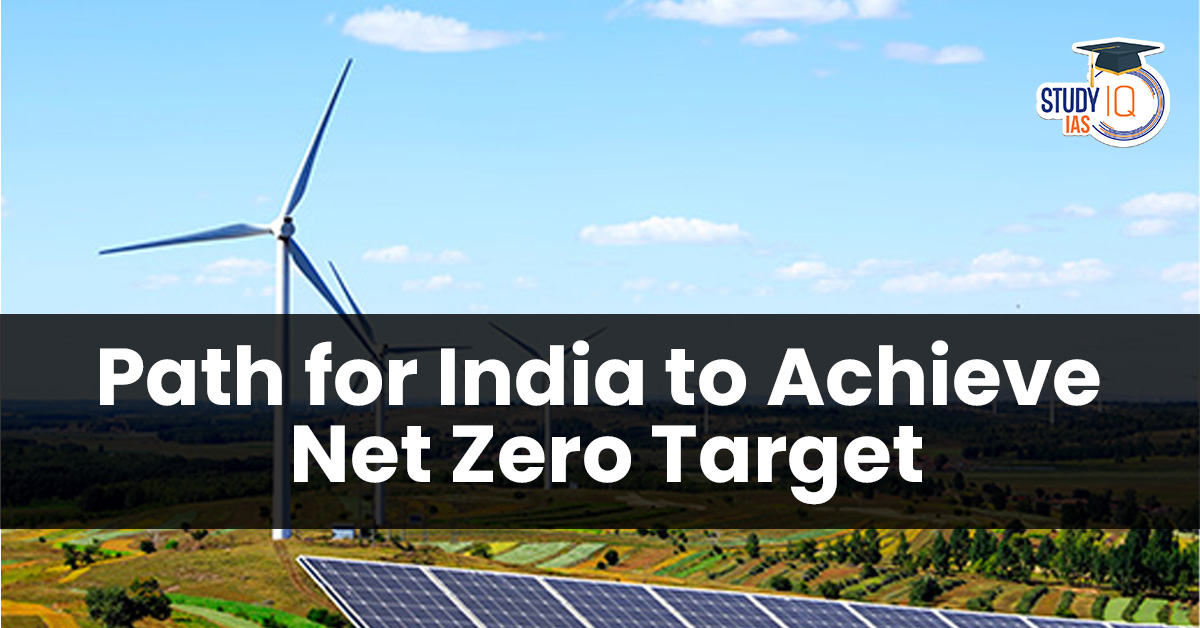Table of Contents
Context: Much needs to be achieved in India in the near term to reach that net zero emission goal.
More In News
- Research by The Fletcher School (Tufts University) and Worley highlights that India’s development (Viksit Bharat) and net-zero journey are interconnected.
- The topic was discussed at the 2025 Raisina Dialogue in the context of the changing “global green deal.”
India’s Path to Net Zero: Challenges in Balancing Fast and Green Growth
- High Dependence on Carbon-Intensive Activities: Coal accounts for 55–60% of India’s power generation.
- Demand for coal is expected to peak only between 2030 and 2035.
- Economic Costs of Climate Risks: Climate-related risks could cause a loss of 8% of GDP by 2030.
- Extreme heat could reduce GDP by 5%–4.5% by 2030 and up to 10% by 2050.
- Lost labour productivity due to extreme heat could cost $220 billion by 2030.
- Carbon cost penalties imposed by importers of Indian goods could lead to $150 billion in lost export revenues annually by 2040 if industries are not decarbonised.
- Dependence on imported fossil fuels (85% of crude oil and 50% of natural gas) exposes the economy to price volatility and geopolitical risks.
|
Fact |
Union Budget 2025 – Key Green Initiatives
|
Potential Benefits of Green Growth
- Job Creation: Green growth could create 50 million new jobs in India by 2070 (World Economic Forum’s Mission 2070 report).
- Could generate $1 trillion in additional economic value by 2030 and up to $15 trillion by 2070.
- Innovation and Manufacturing: Promotes manufacturing and technological innovation with spillover effects on productivity and growth.
- Health Benefits: Improves health, which enhances productivity and economic output.
- Energy Security: Strengthens India’s resilience to global shocks and geopolitical pressures.
Strategies for Holistic Green Growth
Comprehensive Renewables Plan
- Combine investments in renewable capacity with climate adaptation.
- Develop supportive infrastructure:
- Transmission and storage systems.
- Public-private collaborations.
- Carbon capture and storage.
Demand-Side Measures
Farmers (45% of the workforce) need access to:
- Affordable climate-resilient infrastructure.
- Drought-resistant crops and farming practices.
- MSMEs (contribute 30% of GDP) need access to:
- Sustainable technologies.
- Green finance.
- Education and subsidies.
- Tools like carbon pricing and green finance schemes could be expanded.
Managing Transition Risks
Support coal-dependent states by:
- Reskilling workers.
- Rebuilding economies.
- Cross-subsidisation from states benefiting from green transition.
Global Partnerships and Collaboration
Collaboration with international players can enhance:
- Technical expertise.
- Project management.
- Innovative financing (e.g., green bonds, blended finance).
- Multilateral development banks could offer guarantees to encourage private sector participation.
Conclusion
- A holistic and strategic approach to green growth is essential for India to achieve both its Viksit Bharat (2047) and Net-Zero (2070) goals.
- Balancing fast growth with green growth requires:
- Strong infrastructure and technology investments.
- Policy reforms.
- Global collaboration.
- Strategic adaptation to economic disruptions.


 List of National Parks in India 2025, Ch...
List of National Parks in India 2025, Ch...
 Bonnet Macaques: Habitat, Features, Beha...
Bonnet Macaques: Habitat, Features, Beha...
 Periyar Tiger Reserve, Map, Flora, Fauna...
Periyar Tiger Reserve, Map, Flora, Fauna...

























